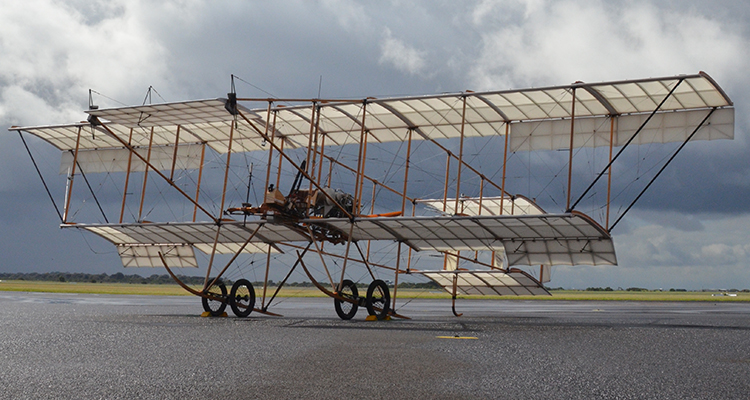Until now, there has been only one flying Bristol Boxkite—the oft-photographed example that is part of the Shuttleworth Collection in England, a fragile chaos of cables and turnbuckles that is flown only on windless days. It is a replica, originally built for the 1965 film Those Magnificent Men in Their Flying Machines. No original Boxkites survive. But seven years ago two foresighted Australians, ex-Royal Australian Air Force engineering officers Ron Gretton and Geoff Matthews, realized that the RAAF’s 100th anniversary would be celebrated in 2014, and that one of the Australian Flying Corps’ very first airplanes was a Boxkite. So they decided to build an accurate replica for that commemoration.
It took them two years of planning and drafting, then five more of sawing, drilling, whittling, laminating, cabling, screwing, gluing, steaming and shaping, plus the manufacture of myriad metal fittings, to get their Boxkite into the air last September 11. The first-flight pilot, an ex-RAAF F-111 driver, came down from his 42-mph hop to announce that now he was the only pilot to have flown both the RAAF’s slowest and fastest types.
It’s often overlooked that the Boxkite was a French design. Bristol was unable to license production of Henri Farman’s successful 1909 biplane, the Farman III, so its chief engineer created plans from drawings published in Flight magazine, and the first Bristol-built Boxkite flew in July 1910. Nor was Boxkite ever part of the airplane’s name, which officially was Bristol Bi-plane. The RAAF’s example was a Bristol Military Biplane, meaning it had a 12-foot greater span on the upper wing; the Shuttleworth’s Boxkite is a standard version.
Original Boxkites had a single flight “instrument”—a yaw string—plus sometimes a barometer to serve as an altimeter. The new Boxkite has an airspeed indicator and a simple altimeter plus a full set of engine instruments. Early Boxkites typically had 50- or 70-hp Clerget rotary engines, but this replica is powered by a 110-hp Australian Rotec (not to be confused with Rotax) 7-cylinder radial; flying as a pusher at very low airspeeds, it must be carefully monitored.
On March 1 and 2, 2014 (weather permitting), Bristol Military Biplane CFS (Central Flying School) Number Three will fly at the 100th anniversary Air Pageant at RAAF Base Williams, near Melbourne, a century after the original CFS-3 made Australia’s first military flight from the site of the same runway.





